Mercedes EQA: a compact electric SUV good enough to take on Tesla?

Our car: Mercedes EQA 300 4Matic AMG Line Premium Plus
List price when new: £56,010*
Price as tested: £57,505 (Night Black paint £0, Driving Assistance pack £1495)
Official range: 260 miles (WLTP)
Test range (best indicated so far): 250 miles
Test efficiency: 3.6m/kWh
*Our test car is an AMG Line Premium Plus, which cost £55,490 otr earlier in 2022, but is no longer available. The price shown is for an AMG Line Premium that replaces it
It’s in tricky territory, the Mercedes EQA. After all, this is a pure electric compact SUV with a range of 260 miles, but in this fairly high-spec guise it’s butting up against alternatives like the Tesla Model Y and Kia EV6. Can it really justify itself in that company? Well, that’s what we’re here to find out.
Now, before we start to get stuck into that question, here are the basics that you need to know about the EQA; Our test car is the EQA 300 4Matic, which is a mid-range model in the EQA lineup. It gets 288bhp and a 0-62mph time of 7.7sec, and starts at £53,010. You can opt for a bit more power with the 350, or sacrifice the four-wheel drive and a fair bit of gumption in favour of the EQA 250, which is cheaper to buy and gets a huge jump up in official WLTP range to 328 miles (and serious traction issues in the wet, I'd add), despite using the same 66.5kWh usable battery as the others. That’s efficiency for you.
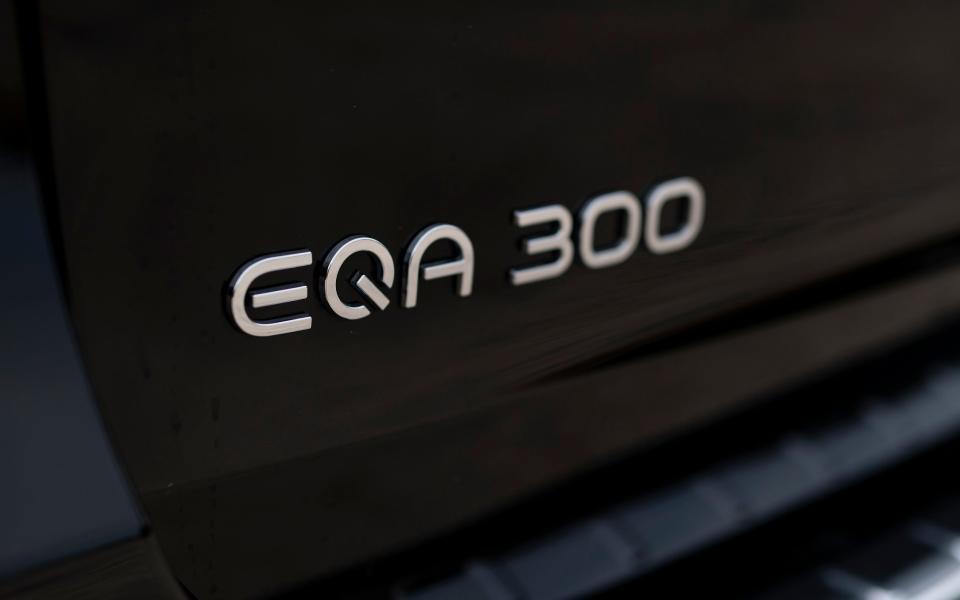
It’s also worth pointing out that Mercedes has updated and simplified its EQA lineup as of June 2022, and has removed the ‘Plus’ trim of our car. Notably, you now can’t get the 20-inch alloy wheels that our test car is riding on. Which is a shame, as I reckon they look absolutely brilliant.
Instead, if you go for the AMG Line Premium trim that is now top spec, you get 19-inch wheels (pictured) that have a bit less wow factor but will likely deliver slightly better ride comfort and range. Otherwise, standard equipment is pretty hard to fault on this level of EQA, with keyless entry, heated seats, panoramic glass sunroof, wireless charging, leatherette upholstery and a huge touchscreen with all the connectivity stuff that you want – even on the range topping EQA as it is post summer update.
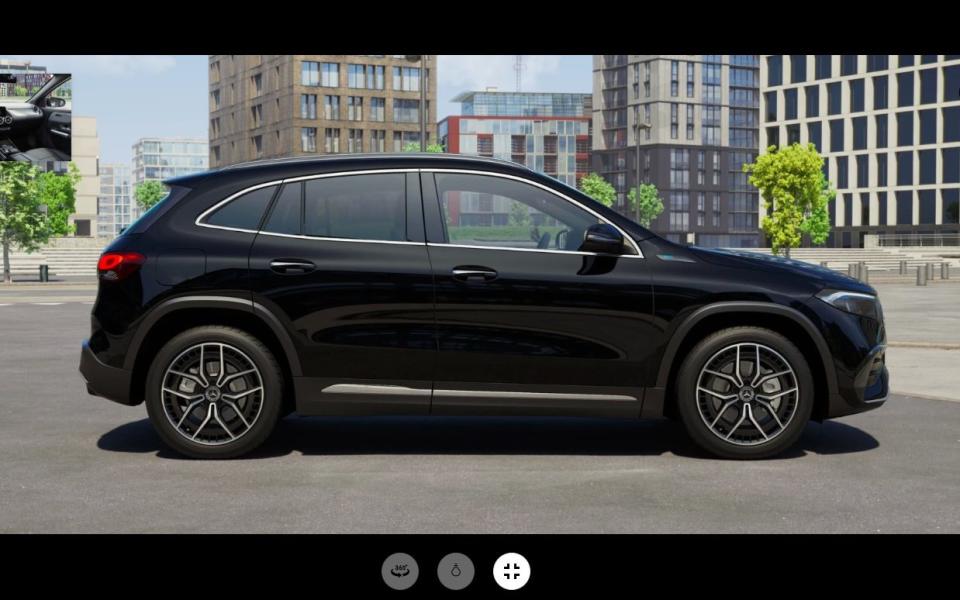
Apart from, that is, the glaring omission that is adaptive cruise control, especially as the EQA actually uses all the hardware and software you need for adaptive cruise control on a routine basis with its ‘Intelligent Recuperation’ mode for the brake regen’. To get adaptive cruise, you have to add the £1495 Driving Assistance Pack. That does also bring blind spot warning, exit warning (which tells you if there’s a car or bike coming along when you’re about to open the door) and a semi-autonomous drive mode.
And that is how you get to a Mercedes EQA; a car that, let’s not forget, shares a platform with the A-Class and isn’t a bespoke EV, yet that costs as much as a Tesla Model Y and a whole host of others.
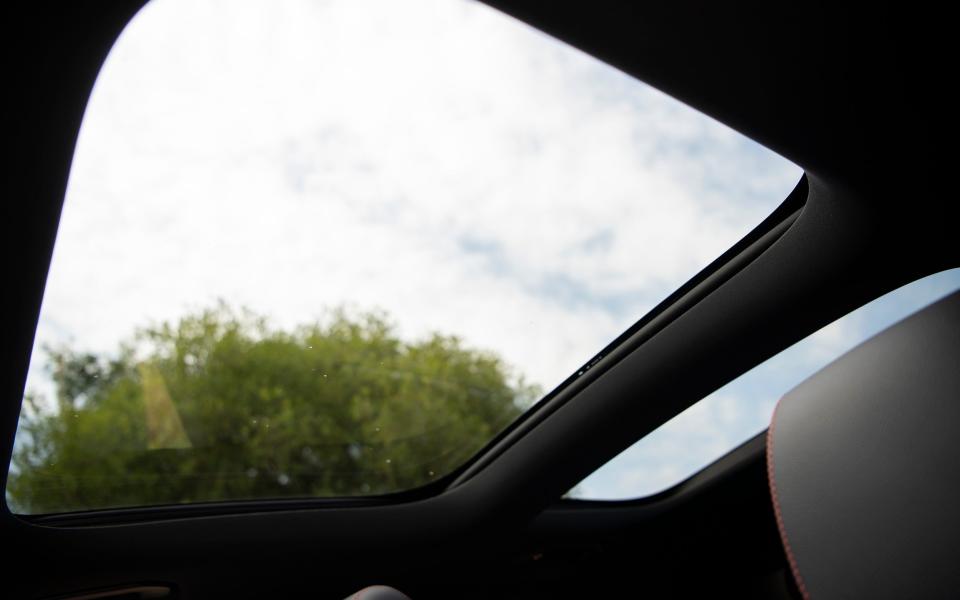
That sounds like we’re on a bit of a downer but, in truth, many of the best EVs sit on shared platforms; witness the Hyundai Kona and Kia e-Niro, for a start. So, can the EQA pull off the same trick? Can the smart little Mercedes SUV prove that it’s up there with big name bespoke EV models like the Tesla, Audi Q4 e-tron et al? We have a few months of normal life, which includes dog- and child-duties, and generally higher mileage than most EV users, to find out.
Warm weather range
Let’s start with the bit that most buyers considering an EV are worried about: range. Our car has an official WLTP range of 260 miles, which isn’t bad at all, but we all know that the official figures rarely reflect reality. We received our EQA when it was still seriously warm, which is good news for driving range because any lithium-ion battery will see better efficiency in temperate conditions. Very hot or very cold weather will see the range drop, as will motorway speeds.
I do a lot of motorway miles, and the best I’ve seen from the EQA as an estimated range is 250 miles. I rather like the way it also gives you a ‘max range’ estimate, which gives you an idea what you could achieve if you stick it in Efficiency mode, turn off the air-con and hyper mile your way home. Typically, the car is suggesting that doing so will gain you around 10-15 miles.
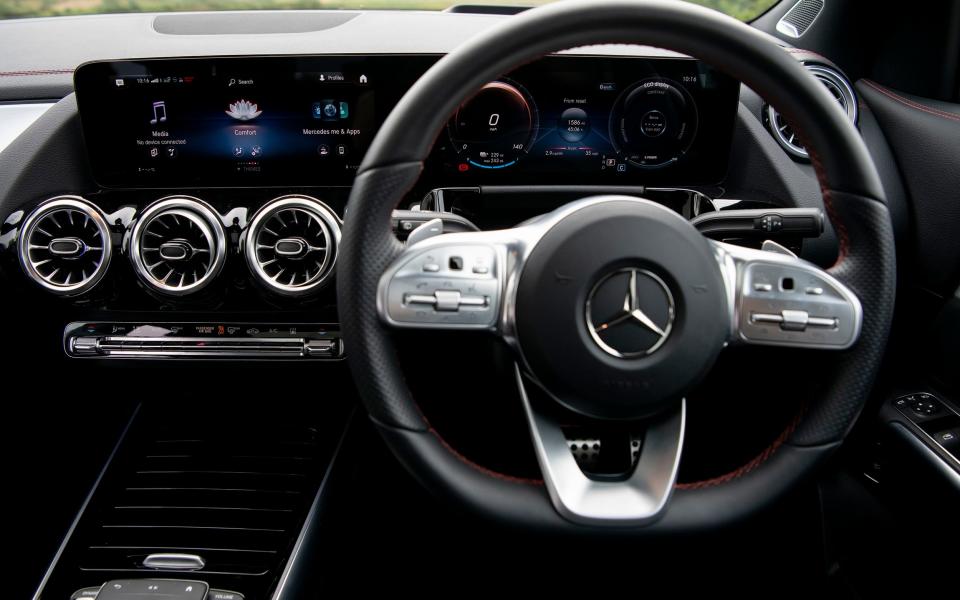
I can rarely be bothered, personally. I know the reliable public chargers on my commonly used routes, and would far rather stop for ten minutes (more than enough with the Mercedes’ 100kW rapid charging rate, if you only need a small boost in range to give you plenty of range) and drive home in comfort. If you are struggling to get a charge, though, that little estimate of what the car could potentially do if you go all efficiency champion could be really useful.
It’s also worth mentioning that the range readout seems to be accurate. Some range readouts (I’m looking at you Peugeot, Citroen et al) are rather over optimistic when they have a full battery, and then suddenly drop the range estimate drastically around the 50% mark, which is really unhelpful and annoying. The Merc’s is reassuringly consistent and reliable.
Overall, I’m finding the EQA to be a properly lovely tourer. Calm, composed and efficient, and just generally full of the sense of classiness that you expect from a car of this price.
Speed limiter exceptionally limiting
This is an issue I’ve had in a variety of Mercedes’, and I want to gripe about it here because it’s an unusual example of Mercedes demonstrating poor ergonomics. Basically, the multi-function steering wheel layout of our EQA (which is common with a huge variety of Mercedes models) the speed limiter can be turned on and off with a single nudge of the toggle button on the right-hand side of the wheel. It controls both cruise control and the speed limiter.
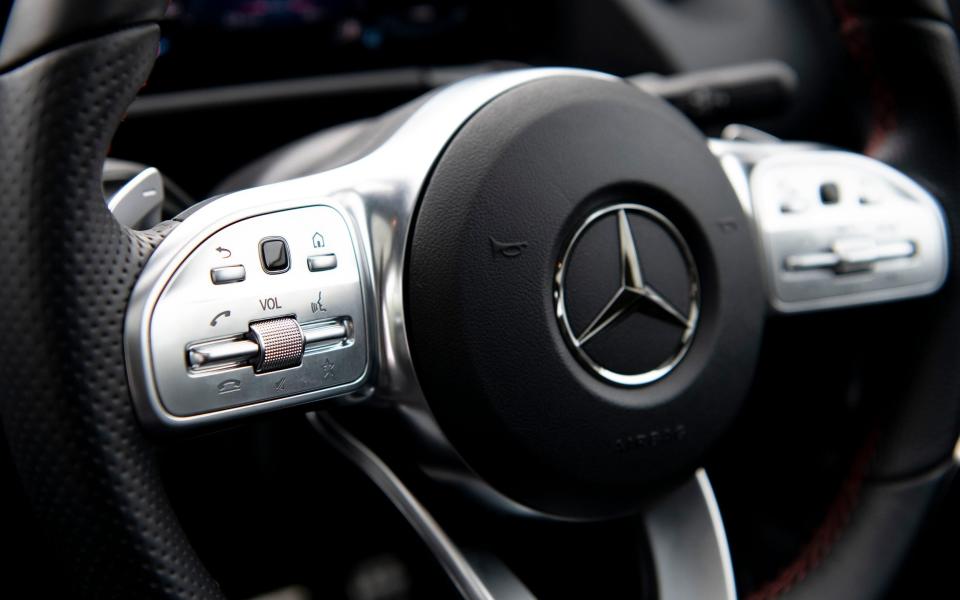
The problem is that I’ve managed to accidentally activate the speed limiter a couple of times now, normally after maneuvering around a car park. It's easy to not notice that you’ve accidentally caught the toggle on the steering wheel and activated the speed limiter. Then you carry on up the road, only to have a heart-stopping moment where you think the car’s broken because it won’t go over 15mph.
It’s a small niggle, but one that’s intruded more than once. Maybe it’s just me being ham-fisted, but it certainly feels like something that Mercedes could do better.
Interior delights
If you buy a premium car like the EQA, you expect a great interior, with quality materials, design, interface and usability. Setting aside the speed limited grumble already mentioned, this is one of the EQA’s strongest areas. I may be disagreeing with your friend and mine, Mr. English on this, as his review of the EQA's interior was somewhat less glowing. In our car, even on routine short journey, I actively appreciate how nice the interior is. Complete with posh-looking rotary vents, lovely part-alcantara seats, 64-way ambient lighting that gives everything a super-classy, er, ambience. Yes, I’m rolling out all the various words that you might use to explain that something feels posh and expensive, but the EQA feels exactly that.
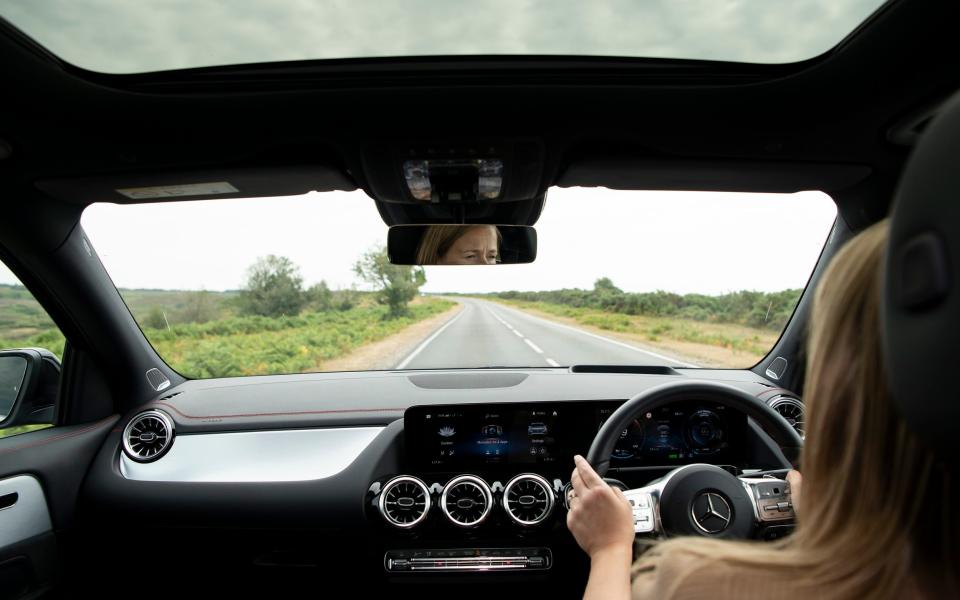
Which is good because, as I said at the beginning of this coverage, it is a pricey car that’s up against serious rivals – many of which have more space, some have longer range, some have better performance, and some have all of that despite costing a similar amount. But the EQA’s interior is a real selling point. It's usefully better than the interior in similarly priced alternatives like the Audi Q4 e-tron, the Tesla Model Y and the Kia EV6, although the BMW iX1 may give the EQA a run for its softly-lit, artfully arranged money.
Maybe I’d like the seats in the EQA to be a little softer, but otherwise they’re supportive, the adjustable lumbar support for the driver is great, visibility is very decent and the whole thing is… just so. A real pleasure to spend time in.
The infotainment system is another boon. As with many drivers these days, I routinely use Apple CarPlay, and it’s annoying that it’s not a wireless connection even if it's hardly a huge chore to plug the phone in and stick it in the useful cubby.
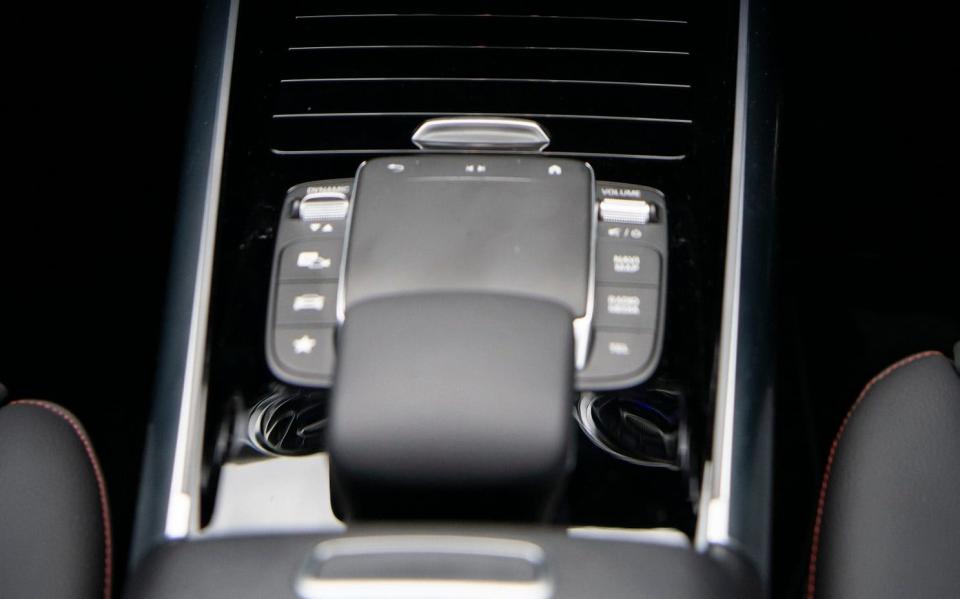
Other than that, the Merc’s system is blessed with great graphics and every method of control imaginable. The touchscreen itself is easy to use, if perhaps a little slow to respond sometimes, but I favour the shortcut buttons and trackpad that sit on the centre console, complete with a wrist-rest to steady your hand, which makes this the easiest way to faff about with your music or nav while you’re driving.
Yes, yes, there’s voice control. Actually, it’s often quite successful in the Merc, and I often rely on it to change radio station if I want to, but – as with every in-car voice control system I’ve yet encountered – it’s hit-and-miss and often I prefer to just use any other method of control on offer. Even the two tiny touchpads on the steering wheel are surprisingly intuitive to use once you’ve conditioned yourself to use the left hand one for the touchscreen, and the right hand one for the digital driver’s readout.
Child seat squeeze
If you use car seats then you’ll be familiar with the awkwardness of getting a bulky car seat fitted into the car properly, regardless of whether you’re using Isofix or not – and never mind the routine faff of strapping-in your little terror.
Mine isn’t so little any more, being six years old, and she now has seats that use the standard three-point belt. The Merc does, of course, have two sets of Isofix points and generally has coped really brilliantly with family life. But, it is annoying that the quite deeply sculpted outer seats of the rear bench aren’t the widest, so our chunky car seat leaves very little clear space for the seatbelt buckle, making it difficult to belt in. It’s a small niggle, and we have a more lightweight seat that fits just fine, too, but it’s still a bit of a niggle.

It wouldn’t stop me recommending the EQA as a family car, though. There have been many family days out in it, including one with my daughter and her cousin, both of whom had plenty of legroom so that they weren’t kicking the seats in front. When they do scuff the front seats, there’s a hard plastic backing that’s really easy to wipe clean, and all of the other materials have proven really resilient. The interior of the Merc still looks great despite routine hard use from the family and dog.
Charging rates
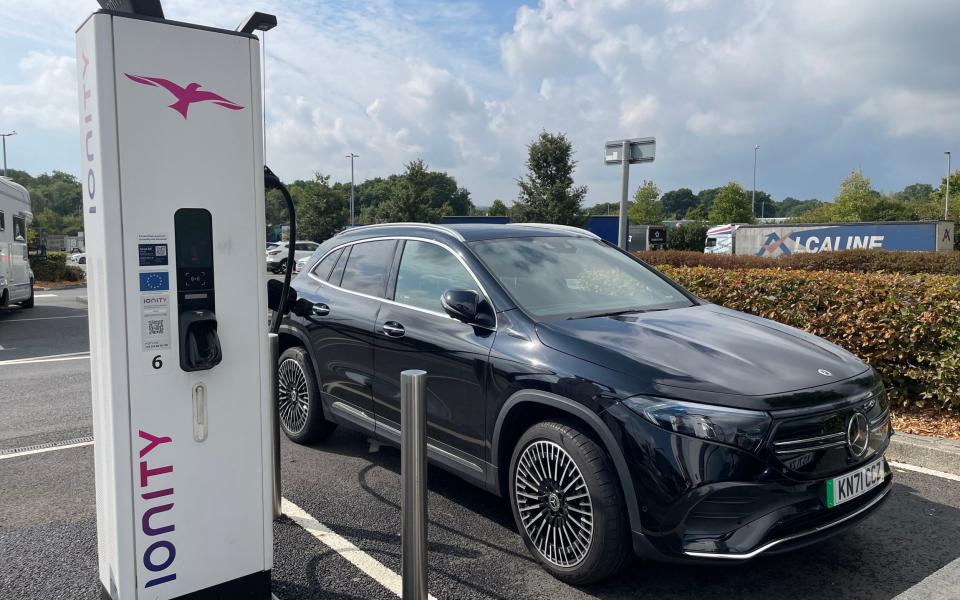
One of the things about EVs that doesn’t get talked about very much is the ‘charging curve’. This is the peak rate at which an EV will charge, which will typically be a fraction below the peak charge rate if the battery is very low, and will then peak somewhere around the 50-60% charge state, before beginning to tail off.
I’ve found our EQA to be pretty good on this front, with a decent charge rate right up until about 80%. The Fastned graph here shows the sort of rate drop off that you might get typically if you’re plugged into a 150kW charger (which are fairly routine in motorway services now, if still nowhere near numerous or well serviced enough).
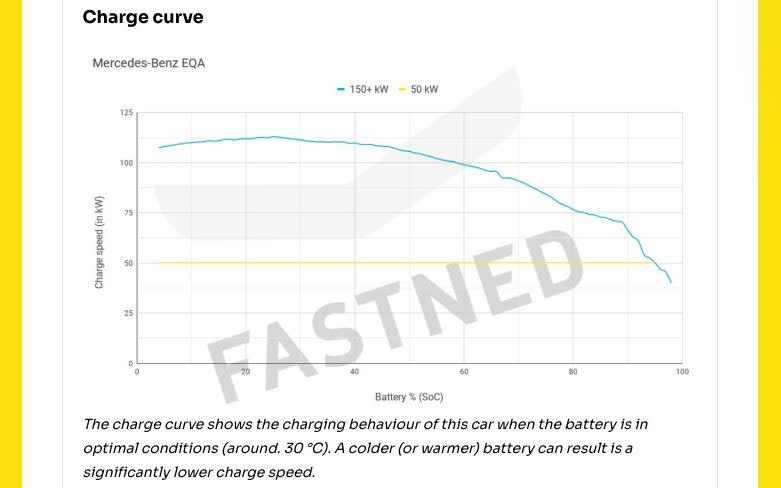
There are others that charge faster, of course, including the Tesla Model Y and Kia EV6 and Hyundai Ioniq 5, so the EQA is definitely on the back foot when it comes to touring by their standards. At least I’ve generally managed to charge without hassle in the Merc, on my weekly-ish long motorway journeys.
Ironically one place I did struggle was at the Ionity chargers, which are funded by Daimler and various other of the big manufacturers. The charger wouldn’t take contactless payment, which is an instant red card in my book, so I was forced to use the app which took three attempts to connect correctly and charge the car.
Still, I got it working in the end, so in the scheme of disastrous public charging incidents that I’ve experienced (mercifully few and far between these days) this is definitely one of the more moderate, and is no reflection on the EQA itself.
Summing up
After three months and some 6000 miles in the Mercedes EQA, I have to say I'm impressed by the whole experience. My lasting impression is of the general classiness and capability that it offers. There were numerous small features that I genuinely appreciated on a daily basis; the fit and finish in the cabin, the seat support (it has excellent lumbar support, which my creaky back demands these days); the excellent keyless entry that opens all of the doors with one tug of the handle - no delay or front-door only opening, as with some rivals. There's even a lighting feature in the cabin where, if you reach across to the empty passenger seat while driving along in the dark, a small light automatically senses the movement and turns on to illuminate the area so that you can see what you're doing. Details make all the difference, and the EQA is surprisingly full of thoughtful ones.

I'd also say that there are few electric cars that are quite so improved by the addition of four-wheel drive as the EQA. The 300 4Matic that we ran has great, punchy performance but, most importantly, it's stoic and confident even in the UK's Autumnal monsoon season. The front-wheel drive 250+ may have longer range, but as soon as you get some damp or low-grip conditions, it becomes incredibly scrappy and wayward as those front tyre struggle to cope with so much torque. Given that it's a reasonable £1000 extra on list price, going for the four-wheel drive 300 4Matic is a no brainer unless you absolutely must have the longer range.
Speaking of range, the EQA did well in colder conditions. It gets a heat pump as standard, which brings more efficient cabin heating and better cold-weather range, so in our experience you'll still manage around 180 - 200 miles even in colder weather and on a solid motorway run.
Just as it was due to go back to Mercedes, our EQA popped up a message saying that it needed servicing. This was because it was getting on for a year old - intervals are every year or 15,000 miles, although as with most modern cars, the EQA will give you a nudge if it thinks it needs attention sooner. I do think it's a shame that Mercedes (and plenty of other manufacturers that also still ask for an annual check-up) doesn't offer longer intervals on its electric cars. Even spreading the schedule to every 18 months and 15,000 miles would make a difference to consumers in terms of cost and convenience, and with fewer parts and intelligent servicing alerts on all EVs anyway, it makes sense to reduce the servicing frequency.
That apart, the Mercedes was genuinely even more of a pleasure than I expected. One of the best driving positions and interiors of any premium small SUV, the typical smooth electric powertrain and hushed refinement, controlled ride comfort, tidy handling, plenty of pace, practical enough for a small family and a big dog, and loads of convenience details . It wish it - and all of its brethren - were less teeth-suckingly pricey. I wish servicing intervals were more generous. I wish the EQA 250, with its longer 324 mile WLTP range, wasn't so compromised for traction that I'd struggle to recommend it. But the EQA 4Matic models - and our 300 4Matic in particular? I'd heartily recommend it to anyone looking for a smart EV. I'll miss ours far more than I expected to.
For new and used buying guides, tips and expert advice, visit our Car Advice section, or sign up to the Telegraph Cars newsletter here and to join the Telegraph Motoring Club Facebook group click here

 Yahoo News
Yahoo News 
